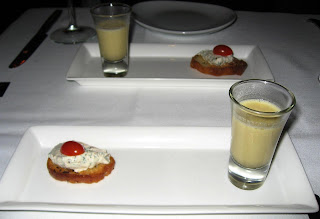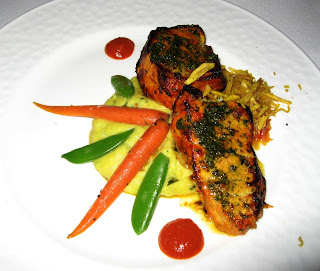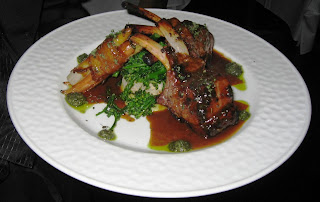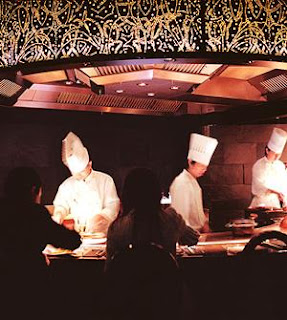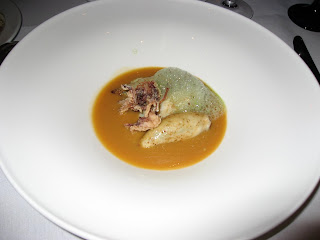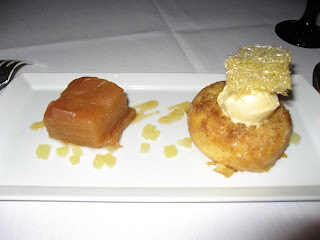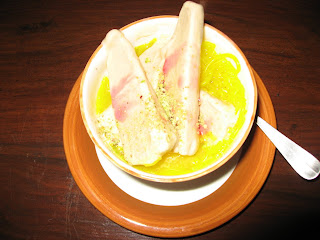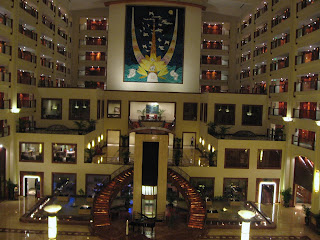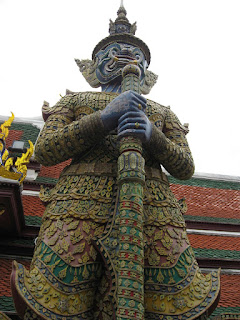 Ancient travellers wrote about the beautiful capital city of the kingdom of Siam. Frenchmen from early 16th century reported the splendor of the temples and palaces they saw which to their mind (in the ultimate praise) even rivaled Paris.
Ancient travellers wrote about the beautiful capital city of the kingdom of Siam. Frenchmen from early 16th century reported the splendor of the temples and palaces they saw which to their mind (in the ultimate praise) even rivaled Paris.I can understand why. There are many reasons people travel to Bangkok: for its beaches, its night life, its food, and for bargain shopping. I am here for business, but in the few hours I had to myself today, I used well. The Grand Palace in the heart of Bangkok with its revered Emerald Buddha temple is a sight to behold. I have never seen so much gold-leaf all at one place in my life!
 Like in Bali, I noticed a lot of common symbolism in the temples and palaces here with Hindu temples in India. While Thailand is predominantly Buddhist, their temples are adorned with mythical figures of monkey-men, frescos depicting scenes from the Ramayana (while Rama's name has remained unchanged, Ravana has a different name here signifying his ten heads). Many have names with Sanskrit origins (my guide's name was Aranya).
Like in Bali, I noticed a lot of common symbolism in the temples and palaces here with Hindu temples in India. While Thailand is predominantly Buddhist, their temples are adorned with mythical figures of monkey-men, frescos depicting scenes from the Ramayana (while Rama's name has remained unchanged, Ravana has a different name here signifying his ten heads). Many have names with Sanskrit origins (my guide's name was Aranya). The Thais love their king and the royal family. My guide spoke with reverence every time she mentioned the king. Called Rama IX, he is the longest reigning Thai monarch and the world's longest serving head-of-state. The king's elder sister had recently died and there were signs of mourning (the colors white and black are both used to signify mourning here). Local visiting the Grand Palace could therefore be easily identified today by their black and/or white clothes.
The Thais love their king and the royal family. My guide spoke with reverence every time she mentioned the king. Called Rama IX, he is the longest reigning Thai monarch and the world's longest serving head-of-state. The king's elder sister had recently died and there were signs of mourning (the colors white and black are both used to signify mourning here). Local visiting the Grand Palace could therefore be easily identified today by their black and/or white clothes. The temple of the Emerald Buddha is apparently the most sacred one among the 140 temples scattered around this city of 10 million people. The statue is only 16 inches tall and made of jade (and not emerald!).
The temple of the Emerald Buddha is apparently the most sacred one among the 140 temples scattered around this city of 10 million people. The statue is only 16 inches tall and made of jade (and not emerald!). In the Grand Palace I could see a lot of influence from neighbouring Cambodia and China. Porcelain and ceramic tiles with designs that are distinctly Chinese, and some rounded temple-tops such as those in Cambodia intermingled with the local architecture. There are also some structures which have been built to European specifications but with Thai adornments on the roof. One of the interesting things here is a detailed, scale model of the Angkor Wat temple.
 Amazingly, Thailand is the only Southeast Asian state that avoided colonial rule! My guide atributed that to the skillful diplomacy of the then king of Siam who she and her people hold in very high esteem for this reason.
Amazingly, Thailand is the only Southeast Asian state that avoided colonial rule! My guide atributed that to the skillful diplomacy of the then king of Siam who she and her people hold in very high esteem for this reason.The tour of the Grand Palace will take about two hours. The mornings are more crowded then later in the day, but for good reason: it can get pretty hot and humid during the afternoon. Also note that shorts (for men) and strappy dresses (for women) are not allowed. Photography is not permited within the temple of the Emerald Buddha and a few other places.

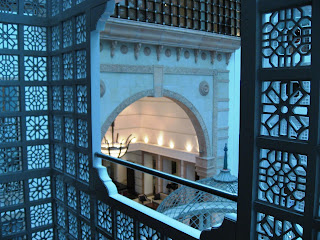




 Mantra in Palo Alto was a delightful discovery! It would not be accurate to call this Michelin recommended restaurant Indian. Mantra's owner Ashwani Dhawan prefers to call this California Cuisine - with a dash of India. Ashwani and his partner, chef Sachin Chopra, have crafted this unique cuisine which combines California freshness with bold spices and flavors of Indian spices.
Mantra in Palo Alto was a delightful discovery! It would not be accurate to call this Michelin recommended restaurant Indian. Mantra's owner Ashwani Dhawan prefers to call this California Cuisine - with a dash of India. Ashwani and his partner, chef Sachin Chopra, have crafted this unique cuisine which combines California freshness with bold spices and flavors of Indian spices.